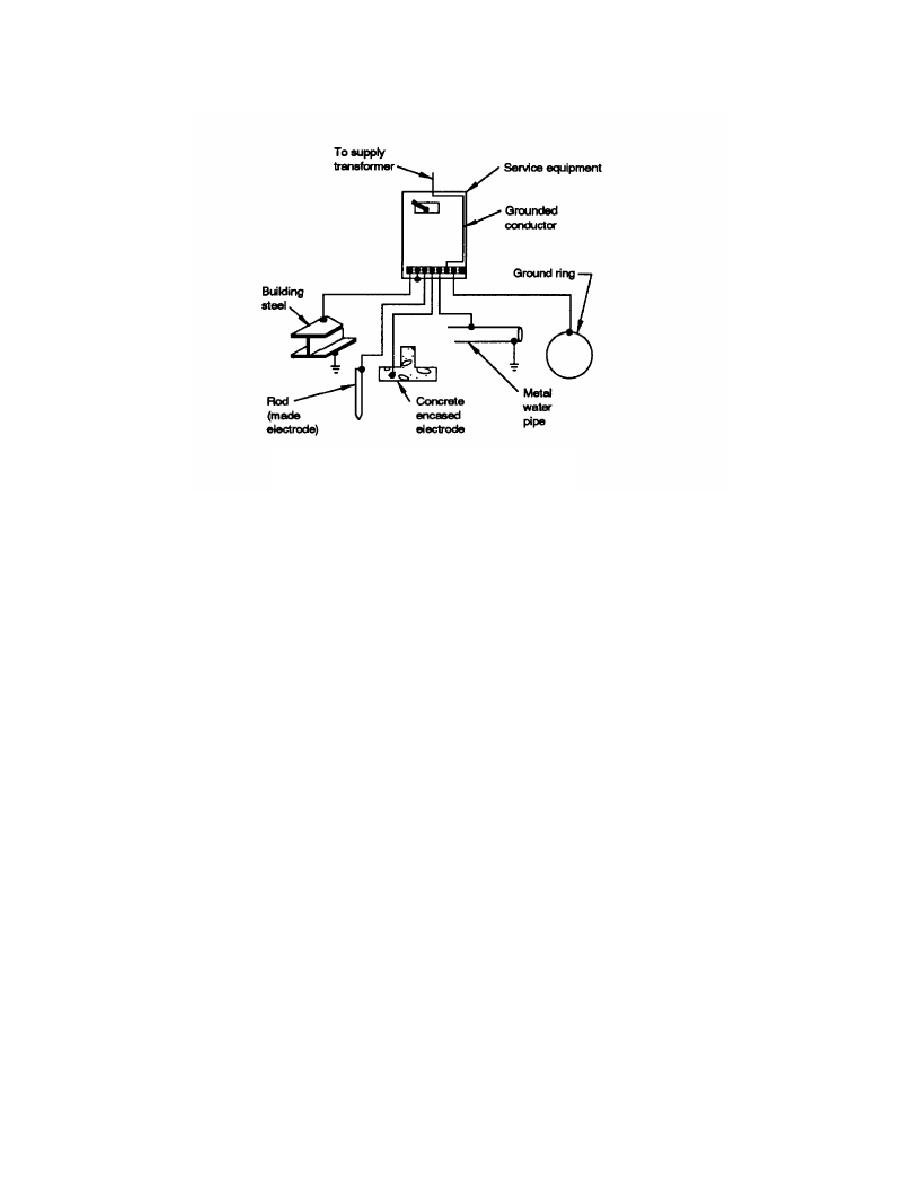 |
|||
|
|
|||
|
Page Title:
Figure 4-8. If the building steel, metal water pipe, concrete-encased electrode |
|
||
| ||||||||||
|
|  DOE-HDBK-1092-2004
Figure 4-8. If the building steel, metal water pipe, concrete-encased electrode, and
ground ring are available, they must be grounded and bonded to the service
equipment to create the grounding electrode system.
4.14 GROUND-FAULT PROTECTION OF EQUIPMENT
See Section 2.7 for GFCIs for personnel protection. An increased degree of protection in solidly
grounded systems can be achieved in providing ground-fault protection that will shunt trip circuit
protective devices when user-selected levels of ground fault or leakage current flow are
detected in electrical circuits. This is required to be installed on all solidly grounded wye
services of more than 150 V to ground but not exceeding 600 V phase-to-phase where the
service disconnecting means is rated at 1,000 A or more (See Figure 3-1).
4.15 PERSONNEL PROTECTIVE GROUNDS
Personnel working on or close to deenergized lines or conductors in electrical equipment should
be protected against shock hazard and flash burns that could occur if the circuit were
inadvertently reenergized. Properly installed equipotential protective grounds can aid in
lessening such hazards by providing additional protection to personnel while they service,
repair, and work on such systems. (See Section 7.5).
4.15.1 PURPOSE OF PERSONNEL PROTECTIVE GROUNDS
Personnel protective grounds are applied to deenergized circuits to provide a low-impedance
path to ground should the circuits become reenergized while personnel are working on or close
to the circuit. In addition, the personnel protective grounds provide a means of draining off static
and induced voltage from other sources while work is being performed on a circuit (Figure 4-9
illustrates an example of a personnel protective ground).
4-16
|
|
Privacy Statement - Press Release - Copyright Information. - Contact Us |